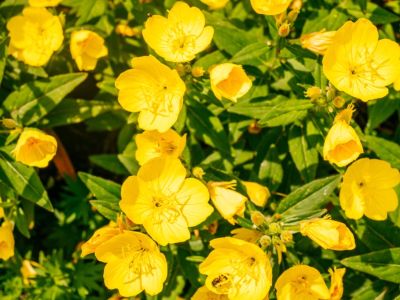About the Yellow Evening Primrose Plant
The evening primrose plant is a native wildflower in North America. It grows in abundance and is sometimes mistaken for a dandelion. As the name suggests, the yellow evening primrose blossoms open up in the evening and the blooms stay open into the early morning. The plant produces lovely, lightly scented yellow blossoms from May to July that range in size from one to two inches (2.5 to 5 cm.).The stems, which are slightly fuzzy, can grow up to 4 inches (10 cm.) tall. In most areas, evening primroses produce flowers from early June to September.
Growing Evening Primrose
Part of the reason many people regard this plant as a weed is that evening primrose is extremely easy to grow. The plant’s seed pods resemble capsules with wings, and are ½ to ¾ inches (1 to 1.9 cm.) long, holding more than a hundred seeds each. Simply spread the seeds where you would like them to grow, making sure the soil is not too wet, since these plants can be prone to root rot. The evening primrose plant is happiest in dry open areas with full sun. Choose an area similar to the open meadows where they naturally thrive in the wild in well-drained, rocky soil with some moisture. The evening primrose is a biennial that will reseed itself wherever you plant it, but it is not very invasive and will remain well behaved in your flower beds. This plant does not transplant well, so plan ahead. It naturalizes with ease and will fill a border beautifully. It is highly drought tolerant.
Pollinators
Since evening primrose only opens in the evening, how does it serve our pollinators? Moths that are busy at night are attracted to the primrose’s fragrance. Just before the flowers close up in the early morning, they are often visited by certain species of bees. In addition, a variety of birds will feast on this plants leaves, and insects enjoy the leaves, buds and seeds, as well. .
Other Uses
Evening primrose is considered to have a wide array of medicinal uses from relieving headaches and inducing labor to curing baldness and as a treatment for laziness. All parts of the evening primrose plant can also be eaten. The leaves are eaten like greens and the roots are eaten like potatoes. While the small leaves of the common evening primrose add nutrition to a salad, the roots can be cooked and eaten as a vegetable, alone or in a vegetable dish.
